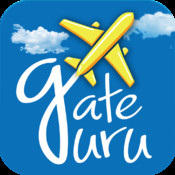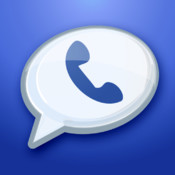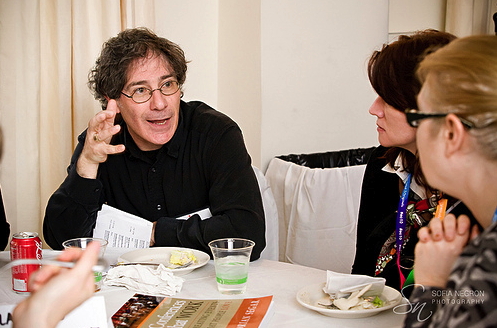7 more great iPhone/iPad apps for event planners

My original iPad is now in my wife’s hands, and my Tumi Alpha man purse (je t’adore, read the reviews!) contains these days an AT&T iPad 3 (fits in the Tumi perfectly), a Verizon iPhone 5s, and a second-generation iPod touch holding music and podcasts which, with the addition of an $8 FM radio transmitter, I use solely to pump audio into my car radio as I drive.
It’s time for an app update. Here are seven more apps that I actively use and enthusiastically recommend to event planners:
Birdbrain
If you are active on Twitter (and I’d argue that most event planners should be) Birdbrain is a fantastic way to manage your Twitter network. The app provides an excellent overview and management of your followers and those you follow. Birdbrain handles multiple accounts, makes it easy to investigate anyone on Twitter, allows you to track unfollows as they occur, list people you’re following who don’t follow you, display mentions and retweets, and provides informative statistics showing changes in your Twitter stats over time. The only feature I’d like to see added is the ability to show inactive accounts you’re following. Recommended!
Waze
Waze is my favorite traffic and navigation app of the many that I’ve tried. Unlike traditional GPS units with traffic updates that I’ve often found to be woefully out of date, Waze uses information from its own users to detect traffic snarls and reroutes you on the fly when necessary to avoid that accident that happened up ahead five minutes ago or the rush hour traffic jam building up on the interstate you normally drive on to get home. Purchased recently by Google, my only concern is that the company will start using my location in nefarious ways. If I start seeing annoying ads promoting the tattoo parlor I’m passing by I’ll reconsider. Until then, this is an amazing app that has saved me hours of driving and frustration, and shown me countless new neighborhoods as I bypass traffic where other drivers sit fuming.
Flywheel
Flywheel is my latest app love, recommended to me by my fashionable younger daughter when I was visiting her in San Francisco last month. Unlike Lyft, SideCar and Uber, Flywheel uses legal licensed taxi services to get you where you want to go. Currently, the app allows you to effortlessly hail cabs in San Francisco, Los Angeles, San Diego, Daytona Beach, Miami, Naples, Atlanta, Louisville, Lexington, Lansing, Cleveland, Oklahoma City, Dallas, San Antonio, and Seattle (and they say more cities are on the way). Once you’ve set up an account tied to a credit card (this takes just a few minutes), hailing a cab requires just two taps on your phone. You can then view a constantly updating display of the time before the cab arrives (never more than a few minutes in my experience), watch the cab approach on a map, and talk directly to the driver if necessary. You have a couple of minutes to change your mind; if you cancel after that you’re charged a $6 fee. The service costs $1 per trip, and your desired tipping percentage is built into the app. You never need to give cash or a credit card to the driver.
All this beats stepping out into the street in the rain and waving frantically at a cab that blithely drives past you!

Foursquare started as a game (be the mayor of places, win badges, and have more points than your friends) and a way to see where your friends are and what they’re doing. I live mostly in a rural area and, while I have occasionally discovered and met up with friends I didn’t know were near me, my main use of this service is to store a searchable history of where I’ve been. When did I drop off that luggage to be repaired? What was the name of that great place I ate dinner with Susie in Atlanta? When exactly was I in Anguilla in 2009? Foursquare’s history of my check-ins is often useful in unexpected ways. And, yes, I admit it, it’s fun to triumphantly win back the mayorship of my favorite local restaurant once in a while…

GateGuru is an airport information app that was purchased by TripAdvisor in June 2013. While it attempts to replicate some of Tripit‘s functionality, I use it to scope out the places to eat (aka amenities) at airports. The traveler’s reviews, while sometimes spotty, usually allow you to pick out the best place to satisfy your current gustatory desires, and I’ve occasionally found a real gem tucked away on Concourse C that I’d otherwise have missed.

Google Voice has been around for years and has a bazillion options, many of which I don’t really understand. But that’s OK, because I find it very useful for two things: a) transferring calls made to my cell to my office phone when I’m at home where my cell phone doesn’t work (ah, the joys of living in rural Vermont) and b) texting. Now let’s be clear: I hate texting and refuse to pay the inflated rates that carriers charge for it on my cell phone, but sometimes it’s the only way to communicate with some people (especially my two younger kids). Google Voice to the rescue! I can text for free from my free Google Voice number, which works with strangers as long as I let them know in the message that it’s me, Adrian Segar, texting them.
Incidentally, though I haven’t yet used this feature, calls made using Google Voice from outside the U.S. to U.S. numbers cost just 1¢/minute; a pretty good rate!

OpenTable allows you to make free reservations at ~30,000 restaurants in the United States, Canada, Germany, Japan, Mexico, and the UK. No more phone calls to a restaurant only to get an answering machine, having to leave a message, and wondering whether you’ll get the reservation you wanted or not. The app works quickly and many reservations give you OpenTable points which can eventually be redeemed for a discount off your meal.
Well, these are some of my favorite iPhone/iPad apps for event planners that make it a little easier to travel, communicate, and eat while I’m on the road. What apps have I missed that are especially useful to event planners that you think should be added to this list? Let us know in the comments below!

